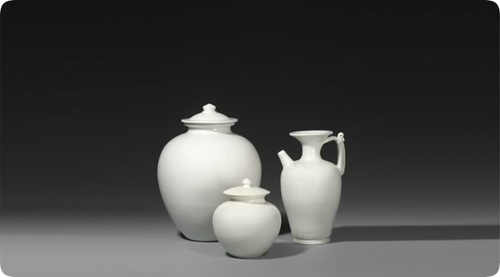White Porcelain 白瓷
Dublin Core
Title
White Porcelain 白瓷
Subject
Plain, Tang porcelain, Clay, Bottle
Description
In Lin cheng, Nei qiu and Xing tai, in northern Hebei, a hard, white porcelain, called Xing porcelain, gained fame and became the standard Tang porcelain. White porcelain was pottery created with a plain white glaze. It began mature production during the Sui Dynasty (581-618 AD). White porcelain was highly praised for its minimalistic design. It was commonly used for everyday items.
Date
Sui Dynasty (581-618 AD)
Relation
White Porcelain, Celadon, Enamel Painted Porcelain, Black Porcelain
Format
Hard, Smooth, White
Type
Craft
Crafts Item Type Metadata
Crafting Methods
It is thought that the first porcelain was made by firing the ceramic materials to the necessary temperature. By so doing, they made a kind of light but strong ceramic that was preferable for artistic and decorative purposes, and it has been in high demand ever since.
Materials
Ceramic
Usage and Application
With obvious advantages over pottery, such as toughness and durability, porcelain was accepted by people rapidly and soon became a necessity.
The most common porcelain pieces are crockery: bowls, plates, tea sets, etc. These porcelain items improved people's lives vastly, especially eating and drinking.
Another daily use of porcelain was stationery items. In imperial China, most scholars had a preference for elegant porcelain-made stationery, such as penholders and paperweights.
The most common porcelain pieces are crockery: bowls, plates, tea sets, etc. These porcelain items improved people's lives vastly, especially eating and drinking.
Another daily use of porcelain was stationery items. In imperial China, most scholars had a preference for elegant porcelain-made stationery, such as penholders and paperweights.
Collection
Citation
“White Porcelain 白瓷,” CCCH9051 Group 64, accessed January 16, 2026, https://learning.hku.hk/ccch9051/group-64/items/show/36.

